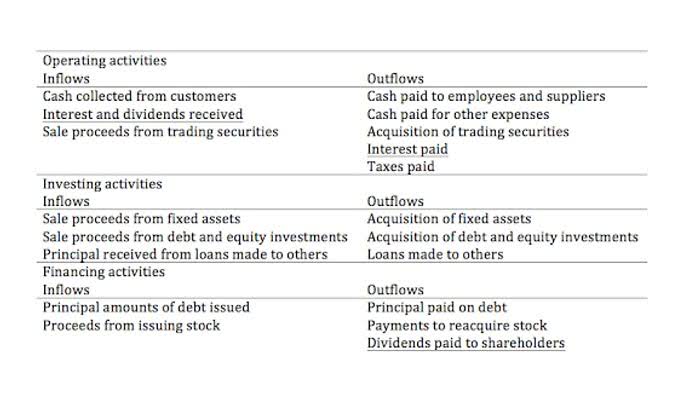
For instance, reconciling accounts receivable with customer invoices ensures reported revenues align with actual sales. This process builds trust with stakeholders and supports compliance with regulations like the Sarbanes-Oxley Act, which mandates robust internal controls. T accounts are used to post the balancing amounts to the financial account and business entries to the final accounts.
Service Revenue Earned but Uncollected
Entries made in T-accounts are summarized to determine the ending balance of each account at a specific point in time. For example, all cash debits and credits are netted to arrive at the final cash balance. These summary balances from the T-accounts are then used to prepare a trial balance, which verifies that total debits equal total credits across all accounts.

Assets
Accountants make bookkeeping easier in the double-entry system to analyze using T-accounts. A double-entry system is a method of bookkeeping in which each input has a specific format to a separate account. It is easy to make errors when manually Insurance Accounting doing your small business accounting.
- If the net realizable value of the inventory is less than the actual cost of the inventory, it is often necessary to reduce the inventory amount.
- Because the rent payment will be used up in the current period (the month of June) it is considered to be an expense, and Rent Expense is debited.
- Learn how to define, record, and benefit from T-Accounts in finance with clear examples and explanations.
- You’ll also want to then record every transaction again in your general ledger to have all transactions in one place.
- It all comes down to the safety afforded by double-entry accounting.
- This system ensures that the books balance, with every action having an equal and opposite reaction, so to speak.
- For example, a company will have a Cash account in which every transaction involving cash is recorded.
Learn more

Double-entry bookkeeping is based on the principle that every transaction affects a minimum of two accounts. In this system, the total credits must always equal the total debits. This is a more robust form of accounting that double-checks each transaction and leaves scope for different aspects of business transactions such as buying and selling on credit.

If you’re handling payroll, the impact of retro pay would be reflected here. Any increase in the owner’s equity is recorded on the credit (right) side and decreases on the debit (left) side. This ties closely to corporate accounting and financial structuring. A decrease in all the liability variables is recorded on the debit (left) side of the T account, whereas all the increases are on the credit (right) side.
- In the T account example above, we have recorded the sale of an item that is worth $200 from ABC Company.
- So grasping these basics helps you delve into these reports and understand the financial story they tell.
- Reviewing these two examples shows you how T-accounts visually represent a balance of your accounts.
- This means that accounts with debit balances like assets will always increase when another debit is added to the account.
- When working with T-accounts and general ledger accounts, the term contra account that will evidently come up.

TallyPrime makes maintaining a double-entry accounting system easy and stress-free. It is easy for the accountants to record transactions without any errors. Tally also makes it effortless to extract the reports and trial balances that would be https://maatravels.co/demystifying-cash-and-cash-equivalents-a/ required for auditing. These reports come in handy especially when you try to get financers to invest in your business, as they get a complete view of your business’ financial status. It ensures that total debits equal total credits and confirms that all transactions have been properly recorded.
- As the business will be paying for the coffee machine in the following month, the accounts payable is increased (credited) by £700.
- And right at the bottom of the page, you can find more questions on the topic submitted by fellow students.
- T-accounts help with understanding how transactions flow, but ledgers are the official books used in accounting reports.
- This T format graphically depicts the debits on the left side of the T and the credits on the right side.
- As you may assume, the accounting equation is central to the balance sheet as it must always balance as well.

A liability account that reports amounts received in advance of providing goods or services. When the goods or services are provided, this account balance is decreased and a revenue account is increased. That part of the accounting system which contains the balance sheet and income statement accounts used for recording transactions. To keep a company’s financial data organized, accountants developed a system that sorts transactions into records called accounts.
Is Double-Entry Accounting a Modern Bookkeeping System?
- Supplies that are on hand (unused) at the balance sheet date are reported in the current asset account Supplies or Supplies on Hand.
- One effect is debit, which adds up the value in T-account, and the other one is the credit effect, which reduces the value.
- Each journal entry must have the dollars of debits equal to the dollars of credits.
- Since cash was paid out, the asset account Cash is credited and another account needs to be debited.
- You can use a T-account for “Pet Sitting Fees” to record your income from each walk.
- Every journal entry is posted to its respective T Account, on the correct side, by the correct amount.
T-accounts, in contrast, are visual tools used to analyze how transactions impact individual accounts. Shaped like a “T,” they separate t account definition debits (left side) and credits (right side) to show how each entry alters a specific account’s balance. This double-entry balances the T-accounting equation, with total debits equal to total credits.
